我朝凶猛:6弹射器HM,6LHDs,3LPDs,。。。
来源:百度文库 编辑:超级军网 时间:2024/04/20 14:36:50
:victory: :D :victory:
China Links Power To Economic Security
May 4, 2009
By Richard D. Fisher, Jr.
http://www.aviationweek.com/aw/g ... Economic%20Security
China is expanding its force-projection capabilities on land, sea and in the air with a range of weapons. The primary goal is to protect economic interests through control of the western Pacific. But China also seeks to counter U.S. naval power in the region and make alliances with strategically placed countries like Iran and Pakistan.
China’s military buildup was acknowledged in the 2009 edition of the Pentagon’s China Military Power report to Congress. “China’s economic development is increasingly dependent upon sustained international stability and secure access to foreign markets and resources,” it states. “[M]ilitary and civilian strategists have begun to discuss the role of the armed forces in protecting and advancing China’s broader political and economic interests.”
In the first two installments of this three-part series, we covered China’s gains in increasingly sophisticated information technologies (DTI March, p. 39) and precision weapons (DTI April, p. 48). This report examines its moves to expand conventional systems.
Such evolution is reflected in official and semi-official Chinese statements, military exercises and deployments, and in the development or acquisition of new means to project power. In late 2004, President Hu Jintao began saying that the People’s Liberation Army (PLA) “must provide a security guarantee for national interests.” The next year, for the first time, China invited Russian military forces to the Shandong Peninsula to conduct joint and combined-arms “Peace Mission” exercises under the aegis of the Shanghai Cooperation Organization (SCO).
In December 2006, China’s national defense white paper stated that the army looks to develop “transregional mobility,” the PLA navy “aims at the gradual extension of the strategic depth of offshore defensive operations,” and the PLA air force seeks “strategic projection.”
The meaning of these terms was partially defined by the Peace Mission exercises, which saw the PLA make a small but unprecedented combined-arms deployment. An air force airborne unit with mechanized armor joined a medium-weight army unit that traveled by train, and JH-7A fighter-bombers and army helicopters deployed by air. Plans are underway for SCO forces to exercise in China, likely in August.
Writing in the Communist Party journal Quishi in July 2007, navy commander Adm. Wu Shengli listed as among his service’s missions maintenance of “the safety of oceanic transportation and the strategic passageway for energy.” Most of China’s tanker-carried petroleum travels though the Strait of Malacca. Last December, China sent a small task force of one Type 052B and one Type 052C air-defense destroyers and a support ship to join navies protecting shipping from Somali pirates. One of the destroyers was replaced in April by a new Type 054A air-defense frigate.
While this is a small start for naval deployments, it is possible that China may turn its investments in new ports and facilities in Myanmar, Chittagong harbor in Bangladesh and the port of Gwadar in Pakistan into access for warships. Academy of Social Sciences expert Ye Hailin in February termed the Indian Ocean China’s “sea of destiny,” and advocated reducing reliance on the Strait of Malacca by building energy routes on land via ports in Pakistan and Myanmar. In March, China and Pakistan held a 10-day naval exercise.
Pakistan and Iran are SCO “observers.” They could see increasing bilateral or multilateral military exercises with China if they become full members.
China’s navy might be larger and better able to conduct operations in the Indian Ocean and beyond by the end of the next decade. On Mar. 20, defense minister Liang Guanglie may have put to rest decades of speculation when he told his Japanese counterpart, Hamada Yasukazu, “China’s navy is . . . rather weak; we need to develop an aircraft carrier.” Such development actually began in the 1980s under then-navy commander Liu Huaqing, who became principal vice chairman of the central military commission (CMC). Liu famously quipped that he would “die with his eyes open” if China did not build a carrier.
In leaks to Japanese and Hong Kong reporters in January, PLA and Chinese shipbuilding officials said that by 2020, the navy may have up to four indigenously designed and built aircraft carriers, two conventional and two nuclear. In addition, the Russian-Ukrainian carrier Varyag, acquired by China in 2002, will be refurbished for training.
Russian technology may figure heavily in carrier designs. In April, a Chinese television show interviewed experts who speculated that the new carrier would be similar to the Varyag, and employ a ski-jump. But the show also explored a unique configuration with up to six catapults. :D Carriers may be built at Dalian, the location of the Varyag, and at an expanded shipyard on Changxing Island near Shanghai. An early base for China’s carrier force will likely be a new naval base on Hainan Island.
China’s carrier air wing is also gathering. Candidate aircraft may include: upgraded Sukhoi Su-33s from Russia; a version of Shenyang Aircraft Corp.’s J-11 modified for carrier operations; a new Shenyang fighter sometimes called J-13, which is smaller than the Su-33 but has stealth features; and a carrier version of Chengdu Aircraft Corp.’s J-10 fighter.
It is expected that Hongdu’s L-15 twin-engine supersonic trainer will become a carrier trainer. Sources indicated in 2005 that China could be developing a carrier-based AWACS.
China’s carrier may also feature unmanned combat aerial vehicles. An L-15 carrier trainer would be one candidate, while purpose-designed versions like Shenyang’s Warrior Eagle could also go to sea.
Heavy naval amphibious capabilities will increase over the next decade. In late 2006, China launched its first 20,000-ton Type 071-class LPD (landing platform dock), which has a well deck that can hold a hovercraft for over-the-horizon force transport. This could be followed by a similarly sized flat-deck LHD (landing helicopter dock) called Type 081. Some sources suggest the PLA will build an initial force of six Type 081s and three Type 071s, :D which could carry several thousand troops and supporting armor. Marine and army amphibious units are deploying a new family of fast amphibious armored vehicles, which use water pump jets and planing surfaces for high speed.
The PLA is also developing large transport aircraft and mechanized forces for distance projection. While Russia and China work out the sale of 32-34 new-build Ilyushin Il-76 transport aircraft with 50-ton load capabilities, China is reorganizing its aircraft industries in a way that may streamline the development of heavy airlifters. This could still involve a great deal of help from Russia and Ukraine, which had hoped to promote a turbofan version of the Antonov An-70. A 2007 concept from the former AVIC-1 consortium showed a 60-ton-capable C-17-like airlifter. This program, however, will also depend on China successfully developing large, high-bypass turbofan engines, a traditional weakness.
In the meantime, the PLA is mechanizing airborne forces, which are nominally under air force command but controlled by the CMC. After Russia failed to sell China its BMD series airborne tank, China revealed its own BMD-like infantry fighting vehicle (IFV) in 2005, which uses the same heavy airborne parachute. In 2006, the PLA revealed a new family of medium-weight 8 X 8 combat vehicles. The IFV version, the VN-1, was shown for the first time at IDEX in Abu Dhabi last February. This 18-25-plus-ton family will feature an air-transportable 105-mm. tank and 122-mm. artillery versions. The VN-1 is expected to gradually replace 6 X 6 fighting vehicles, and be used to form more medium-weight army units that could follow rapidly deployed but lighter mechanized airborne units.
If budgets continue to increase, the PLA could be capable of deploying modest long-range naval and airborne mechanized army forces by the 2020s. While the PLA may not be able to project large-scale forces and may still lack the basing infrastructure of the U.S., China can be expected to gain considerable political leverage from its potential to make distant-force deployments. This could significantly constrain American strategic options and erode security guarantees, forcing many U.S. allies to greatly increase defense spending to deter China.
Richard D. Fisher, Jr., is a senior fellow at the International Assessment and Strategy Center of Arlington, Va., and author of China’s Military Modernization: Building for Regional and Global Reach (Praeger, 2008).
Concept: CCTV
:victory: :D :victory:
China Links Power To Economic Security
May 4, 2009
By Richard D. Fisher, Jr.
http://www.aviationweek.com/aw/g ... Economic%20Security
China is expanding its force-projection capabilities on land, sea and in the air with a range of weapons. The primary goal is to protect economic interests through control of the western Pacific. But China also seeks to counter U.S. naval power in the region and make alliances with strategically placed countries like Iran and Pakistan.
China’s military buildup was acknowledged in the 2009 edition of the Pentagon’s China Military Power report to Congress. “China’s economic development is increasingly dependent upon sustained international stability and secure access to foreign markets and resources,” it states. “[M]ilitary and civilian strategists have begun to discuss the role of the armed forces in protecting and advancing China’s broader political and economic interests.”
In the first two installments of this three-part series, we covered China’s gains in increasingly sophisticated information technologies (DTI March, p. 39) and precision weapons (DTI April, p. 48). This report examines its moves to expand conventional systems.
Such evolution is reflected in official and semi-official Chinese statements, military exercises and deployments, and in the development or acquisition of new means to project power. In late 2004, President Hu Jintao began saying that the People’s Liberation Army (PLA) “must provide a security guarantee for national interests.” The next year, for the first time, China invited Russian military forces to the Shandong Peninsula to conduct joint and combined-arms “Peace Mission” exercises under the aegis of the Shanghai Cooperation Organization (SCO).
In December 2006, China’s national defense white paper stated that the army looks to develop “transregional mobility,” the PLA navy “aims at the gradual extension of the strategic depth of offshore defensive operations,” and the PLA air force seeks “strategic projection.”
The meaning of these terms was partially defined by the Peace Mission exercises, which saw the PLA make a small but unprecedented combined-arms deployment. An air force airborne unit with mechanized armor joined a medium-weight army unit that traveled by train, and JH-7A fighter-bombers and army helicopters deployed by air. Plans are underway for SCO forces to exercise in China, likely in August.
Writing in the Communist Party journal Quishi in July 2007, navy commander Adm. Wu Shengli listed as among his service’s missions maintenance of “the safety of oceanic transportation and the strategic passageway for energy.” Most of China’s tanker-carried petroleum travels though the Strait of Malacca. Last December, China sent a small task force of one Type 052B and one Type 052C air-defense destroyers and a support ship to join navies protecting shipping from Somali pirates. One of the destroyers was replaced in April by a new Type 054A air-defense frigate.
While this is a small start for naval deployments, it is possible that China may turn its investments in new ports and facilities in Myanmar, Chittagong harbor in Bangladesh and the port of Gwadar in Pakistan into access for warships. Academy of Social Sciences expert Ye Hailin in February termed the Indian Ocean China’s “sea of destiny,” and advocated reducing reliance on the Strait of Malacca by building energy routes on land via ports in Pakistan and Myanmar. In March, China and Pakistan held a 10-day naval exercise.
Pakistan and Iran are SCO “observers.” They could see increasing bilateral or multilateral military exercises with China if they become full members.
China’s navy might be larger and better able to conduct operations in the Indian Ocean and beyond by the end of the next decade. On Mar. 20, defense minister Liang Guanglie may have put to rest decades of speculation when he told his Japanese counterpart, Hamada Yasukazu, “China’s navy is . . . rather weak; we need to develop an aircraft carrier.” Such development actually began in the 1980s under then-navy commander Liu Huaqing, who became principal vice chairman of the central military commission (CMC). Liu famously quipped that he would “die with his eyes open” if China did not build a carrier.
In leaks to Japanese and Hong Kong reporters in January, PLA and Chinese shipbuilding officials said that by 2020, the navy may have up to four indigenously designed and built aircraft carriers, two conventional and two nuclear. In addition, the Russian-Ukrainian carrier Varyag, acquired by China in 2002, will be refurbished for training.
Russian technology may figure heavily in carrier designs. In April, a Chinese television show interviewed experts who speculated that the new carrier would be similar to the Varyag, and employ a ski-jump. But the show also explored a unique configuration with up to six catapults. :D Carriers may be built at Dalian, the location of the Varyag, and at an expanded shipyard on Changxing Island near Shanghai. An early base for China’s carrier force will likely be a new naval base on Hainan Island.
China’s carrier air wing is also gathering. Candidate aircraft may include: upgraded Sukhoi Su-33s from Russia; a version of Shenyang Aircraft Corp.’s J-11 modified for carrier operations; a new Shenyang fighter sometimes called J-13, which is smaller than the Su-33 but has stealth features; and a carrier version of Chengdu Aircraft Corp.’s J-10 fighter.
It is expected that Hongdu’s L-15 twin-engine supersonic trainer will become a carrier trainer. Sources indicated in 2005 that China could be developing a carrier-based AWACS.
China’s carrier may also feature unmanned combat aerial vehicles. An L-15 carrier trainer would be one candidate, while purpose-designed versions like Shenyang’s Warrior Eagle could also go to sea.
Heavy naval amphibious capabilities will increase over the next decade. In late 2006, China launched its first 20,000-ton Type 071-class LPD (landing platform dock), which has a well deck that can hold a hovercraft for over-the-horizon force transport. This could be followed by a similarly sized flat-deck LHD (landing helicopter dock) called Type 081. Some sources suggest the PLA will build an initial force of six Type 081s and three Type 071s, :D which could carry several thousand troops and supporting armor. Marine and army amphibious units are deploying a new family of fast amphibious armored vehicles, which use water pump jets and planing surfaces for high speed.
The PLA is also developing large transport aircraft and mechanized forces for distance projection. While Russia and China work out the sale of 32-34 new-build Ilyushin Il-76 transport aircraft with 50-ton load capabilities, China is reorganizing its aircraft industries in a way that may streamline the development of heavy airlifters. This could still involve a great deal of help from Russia and Ukraine, which had hoped to promote a turbofan version of the Antonov An-70. A 2007 concept from the former AVIC-1 consortium showed a 60-ton-capable C-17-like airlifter. This program, however, will also depend on China successfully developing large, high-bypass turbofan engines, a traditional weakness.
In the meantime, the PLA is mechanizing airborne forces, which are nominally under air force command but controlled by the CMC. After Russia failed to sell China its BMD series airborne tank, China revealed its own BMD-like infantry fighting vehicle (IFV) in 2005, which uses the same heavy airborne parachute. In 2006, the PLA revealed a new family of medium-weight 8 X 8 combat vehicles. The IFV version, the VN-1, was shown for the first time at IDEX in Abu Dhabi last February. This 18-25-plus-ton family will feature an air-transportable 105-mm. tank and 122-mm. artillery versions. The VN-1 is expected to gradually replace 6 X 6 fighting vehicles, and be used to form more medium-weight army units that could follow rapidly deployed but lighter mechanized airborne units.
If budgets continue to increase, the PLA could be capable of deploying modest long-range naval and airborne mechanized army forces by the 2020s. While the PLA may not be able to project large-scale forces and may still lack the basing infrastructure of the U.S., China can be expected to gain considerable political leverage from its potential to make distant-force deployments. This could significantly constrain American strategic options and erode security guarantees, forcing many U.S. allies to greatly increase defense spending to deter China.
Richard D. Fisher, Jr., is a senior fellow at the International Assessment and Strategy Center of Arlington, Va., and author of China’s Military Modernization: Building for Regional and Global Reach (Praeger, 2008).
Concept: CCTV
越来越猛。。。。。。
这外国人的消息哪来的{:3_82:}
谁来给翻译一下
楼主看的肯定是国内标题党的文章
凤凰标题党《美智库声称中国在研究装备6个弹射器航母方案》http://news.ifeng.com/mil/2/200905/0508_340_1145807.shtml
In April, a Chinese television show interviewed experts who speculated that the new carrier would be similar to the Varyag, and employ a ski-jump. But the show also explored a unique configuration with up to six catapults. Carriers may be built at Dalian, the location of the Varyag, and at an expanded shipyard on Changxing Island near Shanghai. An early base for China’s carrier force will likely be a new naval base on Hainan Island.
“在今年4月份的时候,在一家中国电视台的专家采访节目中,一位接受采访的专家称中国的航母可能会采购与“瓦良格”号航母相似的建造结构,并可能会利用滑跃式甲板。不过,该电视节目还显示了另外一种独特的建造方案。根据这种建造方案,航母将会配备高达六个飞机弹射器。文章认为,中国可能会在位于上海长兴岛的一家造船厂建造其航母,而其在海南岛建立的海军基地则可能会成为中国航母的基地。”
即使说6条弹射器也是指CG设计,但是从字里行间看来,文章原作者捎带提了一笔,而转载妓者绝对是标题党!楼主也没有细看就转载了。
这篇文章通篇MD大粪,没什么价值。
楼主看的肯定是国内标题党的文章
凤凰标题党《美智库声称中国在研究装备6个弹射器航母方案》http://news.ifeng.com/mil/2/200905/0508_340_1145807.shtml
In April, a Chinese television show interviewed experts who speculated that the new carrier would be similar to the Varyag, and employ a ski-jump. But the show also explored a unique configuration with up to six catapults. Carriers may be built at Dalian, the location of the Varyag, and at an expanded shipyard on Changxing Island near Shanghai. An early base for China’s carrier force will likely be a new naval base on Hainan Island.
“在今年4月份的时候,在一家中国电视台的专家采访节目中,一位接受采访的专家称中国的航母可能会采购与“瓦良格”号航母相似的建造结构,并可能会利用滑跃式甲板。不过,该电视节目还显示了另外一种独特的建造方案。根据这种建造方案,航母将会配备高达六个飞机弹射器。文章认为,中国可能会在位于上海长兴岛的一家造船厂建造其航母,而其在海南岛建立的海军基地则可能会成为中国航母的基地。”
即使说6条弹射器也是指CG设计,但是从字里行间看来,文章原作者捎带提了一笔,而转载妓者绝对是标题党!楼主也没有细看就转载了。
这篇文章通篇MD大粪,没什么价值。
vw1 发表于 2009-5-9 09:50 
你个丫的。看不出大爷我是在嘲讽理查德。鱼鹰?:D
什么通篇MD大粪。6艘LHD我看就很靠谱。就是还少点。:D :D

你个丫的。看不出大爷我是在嘲讽理查德。鱼鹰?:D
什么通篇MD大粪。6艘LHD我看就很靠谱。就是还少点。:D :D
航母将会配备高达六个飞机弹射器。这航母吨位要多大才能装下六个弹射器啊:D
理查德。鱼鹰的又一力作::D:D
http://theasiandefence.blogspot. ... ft-carriers-by.html
http://theasiandefence.blogspot. ... ft-carriers-by.html
6个减半,靠谱
该作者应叫
理察德.小鱼
中国某电视台,小鱼估计紧订老张讲话,战略忽悠局真把小鱼给忽悠了
该作者应叫
理察德.小鱼
中国某电视台,小鱼估计紧订老张讲话,战略忽悠局真把小鱼给忽悠了
既非人又非鬼 发表于 2009-5-9 10:03 
哈哈哈
俺先过目了中文版,所以一时不查,战略协同上没有跟人鬼保持一致呀
骚蕊骚蕊!
果然是美国大湿的大作哇!
6LHD?要那么多这个玩艺干啥?难道你奢望LPH呢?国内木有好蜻蜓哇,要那么多米用。要来就来6CVN
ps:没人说”你个丫的“,都直接”你大爷的“或者”你丫怎么怎么“

哈哈哈
俺先过目了中文版,所以一时不查,战略协同上没有跟人鬼保持一致呀
骚蕊骚蕊!
果然是美国大湿的大作哇!
6LHD?要那么多这个玩艺干啥?难道你奢望LPH呢?国内木有好蜻蜓哇,要那么多米用。要来就来6CVN
ps:没人说”你个丫的“,都直接”你大爷的“或者”你丫怎么怎么“
吓了一大跳...;funk
LS的,为什么是小鱼儿啊?:D
应该是渔夫。丫的祖辈是打鱼出身,故名。叫鱼鹰是退化的表现。:D:D
应该是渔夫。丫的祖辈是打鱼出身,故名。叫鱼鹰是退化的表现。:D:D
确实很猛,大片英文看不懂:L
今年能看到一艏就不错了..
航母将会配备高达六个飞机弹射器。文章认为,中国可能会在位于上海长兴岛的一家造船厂建造其航母,而其在海南岛建立的海军基地则可能会成为中国航母的基地。”
哇靠~TG航妈直接配备高达鸟~
MS忽悠该鸟语了
航母将会配备高达:victory:
这才是亮点啊:D
这才是亮点啊:D
楼主是何方神圣敢断言有6艘LHD?
美帝六弹设计貌似要25万吨.
各位大大,如果动力不是问题的话,航母有没有可能设计成30~50万吨甚至上100万吨的超级巨无霸?
这种规模的海上巨型机场看着一定超级壮观。{:3_81:}
这种规模的海上巨型机场看着一定超级壮观。{:3_81:}
这个文章好长, 可信度太低, 资料基本上是七拼八凑
15楼的已经泄得不成人形了。
理查德.菲舍尔是著名的中国威胁论制造者,他是美版的张召忠,看他的文章,也就是图个乐而已,基本属于扯淡+YY,估计他自己都不是那么想的。
曲苑杂坛
本贴应该高亮
并广为流传
并广为流传
TG要采购“太空堡垒”的地球版吗。。。。。??{:3_98:}
6个LHD……竟然比LPD还多
两个字~~忽悠
这个美国佬咋这么SB!!?
看来现在来忽悠TG 和TG忽悠米帝的开始上演了
这个事8知道
FISHER当年泻的很多后来都得到了证实
他还是接触了不少美国方面认为准确的情报的
FISHER当年泻的很多后来都得到了证实
他还是接触了不少美国方面认为准确的情报的
既非人又非鬼 发表于 2009-5-9 10:03 
大大 6弹弓怎么说! 要说这个设计 米帝都还没实现现实话 这个毕竟不知道未来设计成什么!
4弹弓毕竟有参考!6弹弓 难道TG得到传说中的天顶星技术 偶很HKC但是听到6弹弓 我KC白了
这个是什么航妈 真的好难联想呀

大大 6弹弓怎么说! 要说这个设计 米帝都还没实现现实话 这个毕竟不知道未来设计成什么!
4弹弓毕竟有参考!6弹弓 难道TG得到传说中的天顶星技术 偶很HKC但是听到6弹弓 我KC白了
这个是什么航妈 真的好难联想呀
在先锋看到想象图了。一帮外国脑残人士YY的杰作。
nmd 发表于 2009-5-9 15:43 
要求上图

要求上图
SokhoiRose 发表于 2009-5-9 14:07 
正常的配置应该是一个远征特遣队下辖1LHA/LHD 2 LPD。不可能存在LPD比LHD还少的局面!

正常的配置应该是一个远征特遣队下辖1LHA/LHD 2 LPD。不可能存在LPD比LHD还少的局面!
很不靠谱!

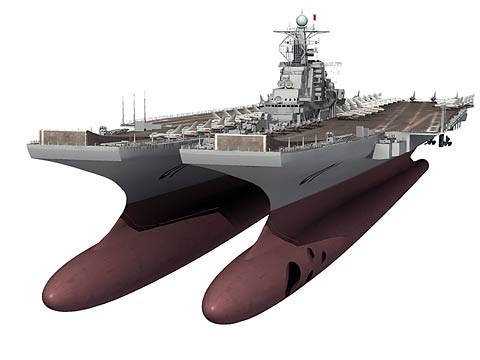


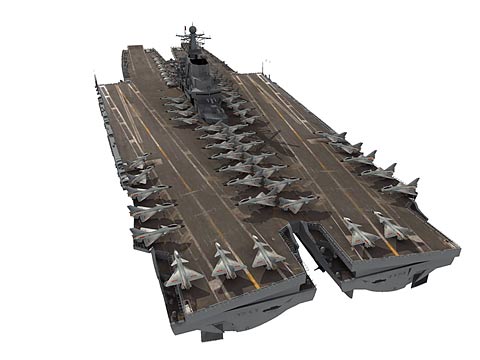
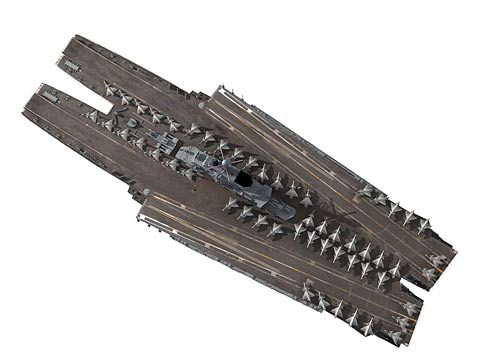
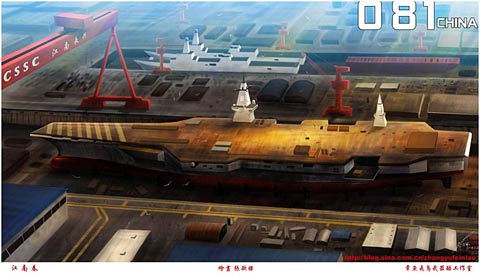
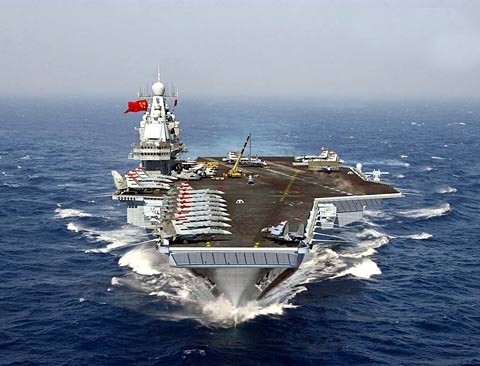
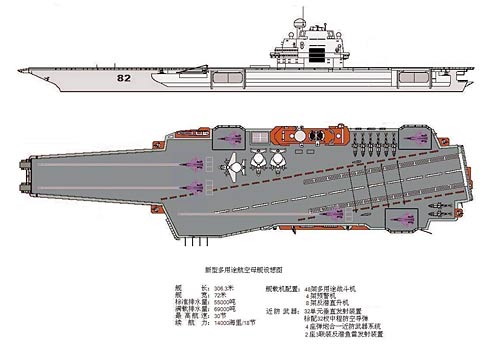




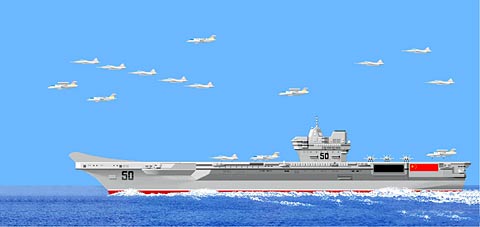


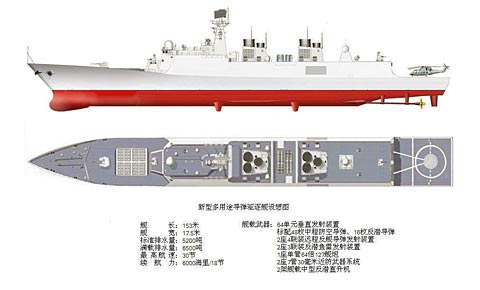

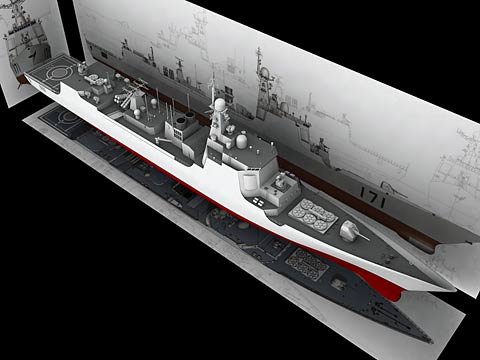
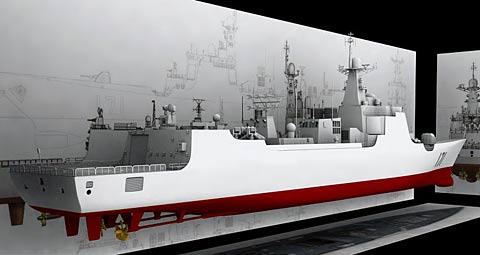
这个让人怀疑